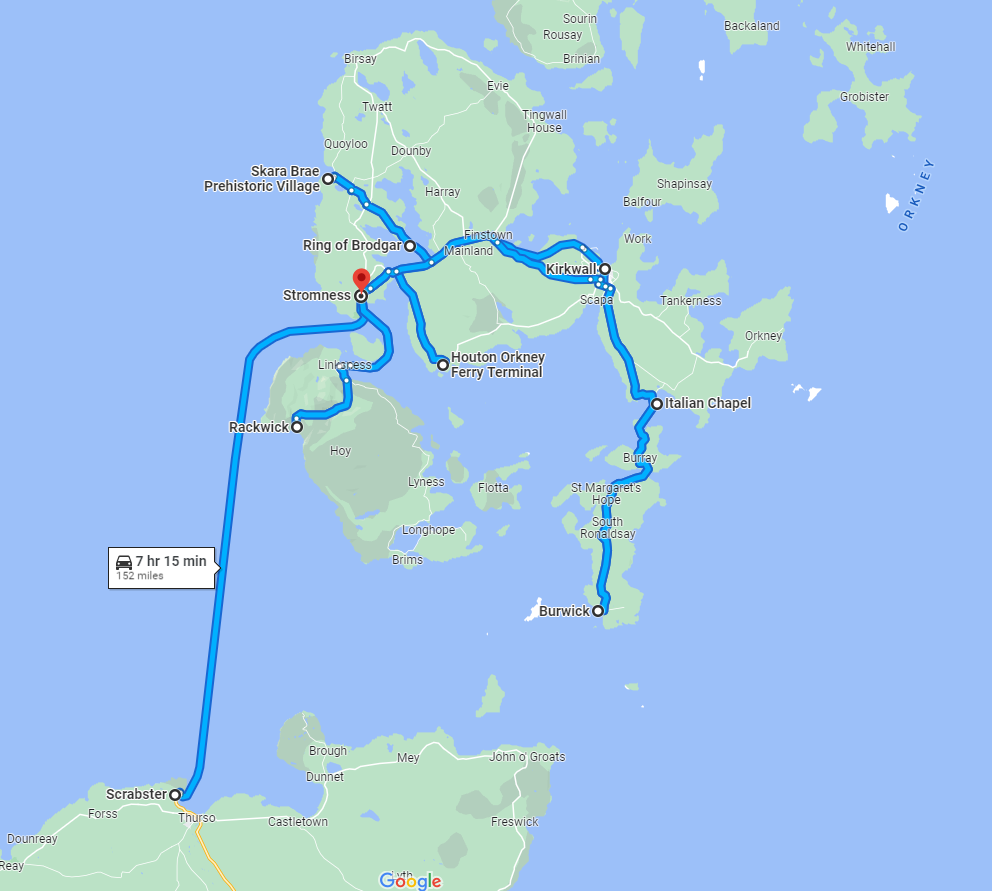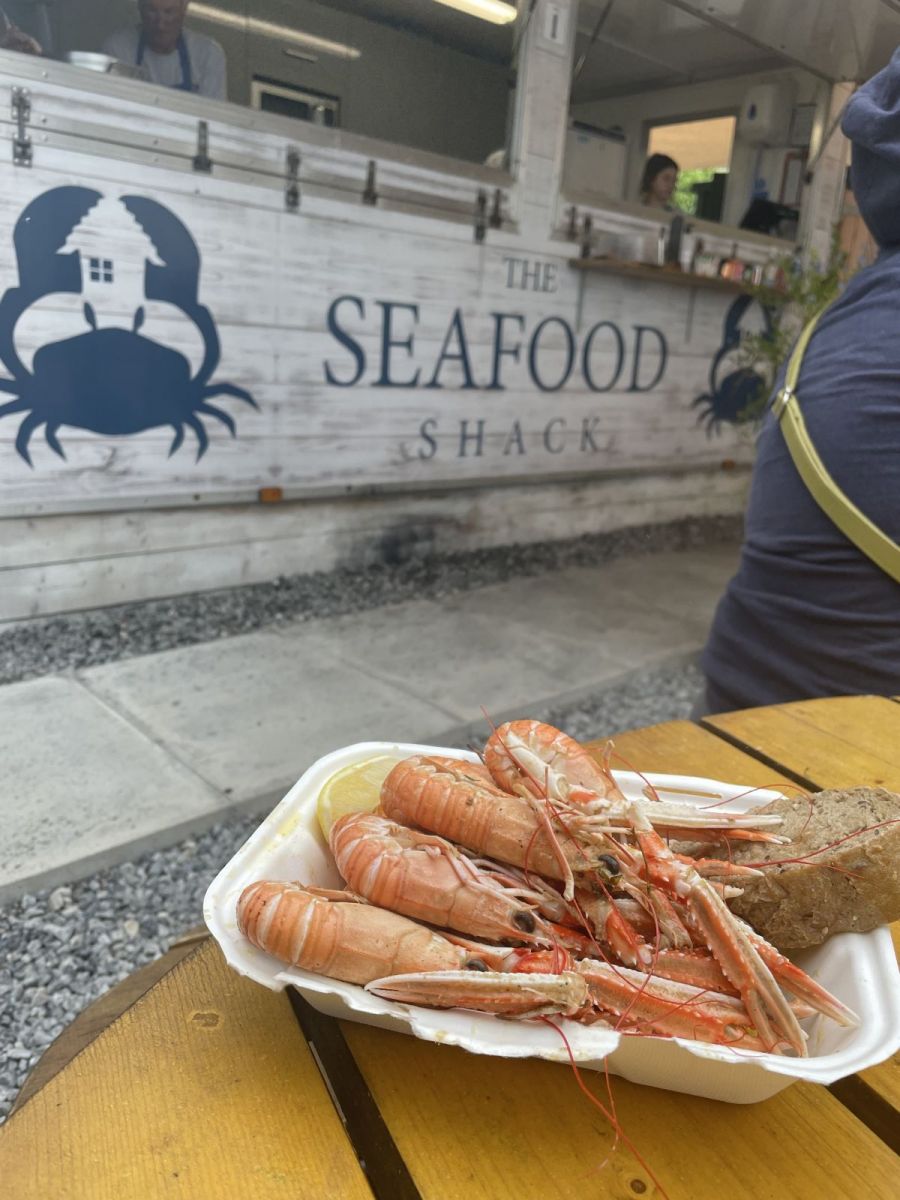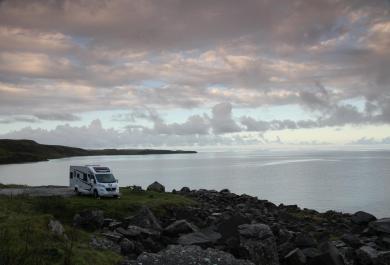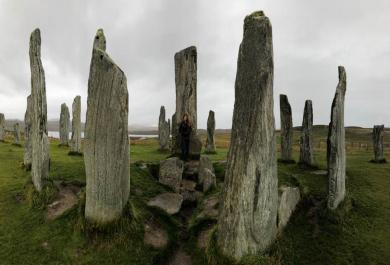
NC500 Campervan Tour Including Orkney
Thinking about touring the NC500 with a campervan why not include Orkney as part of the journey, you will need a minimum of 10 nights to be able to complete the route, if you prefer to take a more leisurely pace then it might be worth considering an extra few nights. The NC500 is one of Scotland most publicised and popular routes, the route takes you round the north coast of Scotland and has some of the most spectacular scenery along the way. This route can be adapted to just completing the NC500 if you didn’t have time or want to visit Orkney, you can just skip past the information we have put together for visiting Orkney.
NC500 Map Orkney Map
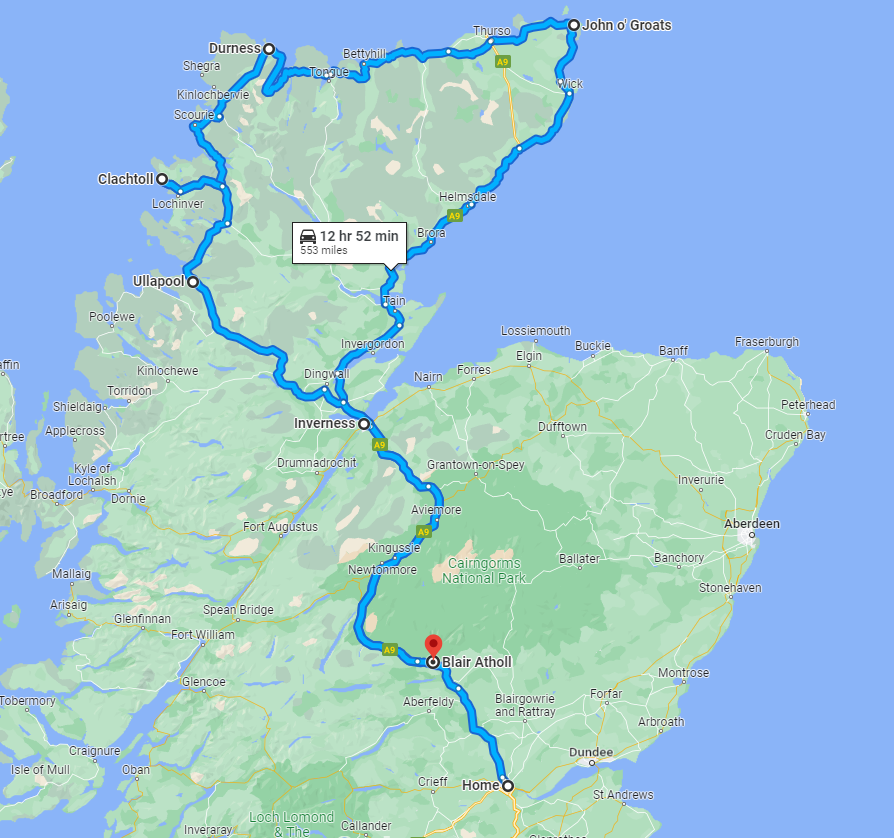
There is so much to see and do along this route such as watching out for Scotland’s very own big 5 the Golden eagle, Red Deer, Common seal, Otter, and the Red Squirrel, all of which including dolphins can be spotted as you travel along this coastline. As well as looking out for the big 5 when you are out exploring you can stop off and visit castles, beaches and waterfalls to name but a few activities and if you’re planning on crossing over to Orkney then you will have the advantage of learning a little more about the vital role Orkney played during the first and second world war.
Day 1
The Scottish Tourer NC500 route starts at our depot in Perth, which is the heart to the highlands, we are ideally based for travel all over Scotland, but our NC500 route will take you from Perth with a suggested overnight stop in Aviemore, I would recommend parking at the Coire na Ciste motorhome stop set in the heart of the cairngorms and ideally located to start watching out for the big 5.
There is so much to see and do in the Aviemore area – we are expecting the Cairngorm Mountain Railway to reopen early 2023 this is just a short walk from the Coire na Ciste overnight parking area. The railway will take you to the top viewing platform where there is a café, visitor centre and shop – the outdoor viewing platform allows panoramic views so don’t forget your camera and binoculars.
Other attractions in the area include:-
- Tree top trail at Tree Zone.
- Loch Morlich water sports,
- Landmark adventure park,
- Strathspey steam railway
- Highland Wildlife Centre
- Cycle paths (we offer cycle hire)
.png)
Day 2
From Aviemore continue on the A9 towards Inverness, for a lot of our customers visiting Loch Ness is on their "to do list" trying to get a glimpse of our very own Loch Ness Monster “Nessie”, i don’t want to put a dampner on the experience but please be aware the road round to the Loch Ness visitor centre is narrow in places with lots of overhanging tress, so please drive this road with caution – the last thing you want to do is have a bump with another vehicle or scratch down the side of the campervan with a tree branch at the start of your holiday. There is the opportunity to book a Loch Ness boat cruise and get out onto the water and go hunting for Nessie some of these excurions dont necessarily start at the visitor centre.
Other attractions around the Inverness area include :-
- Urquhart Castle
- Culloden battlefield
- Clava Cairns
- The Caledonian Canal
- Fort George
As you leave inverness head on towards Dornoch if you are looking for a campsite for tonight there is a few to choose from in the Dornoch area if your happy to wildcamp you can stay overnight at Helmsdale by the harbour, there is a donation box (suggested donation £10) by the lifeboat monument at the edge of the harbour.
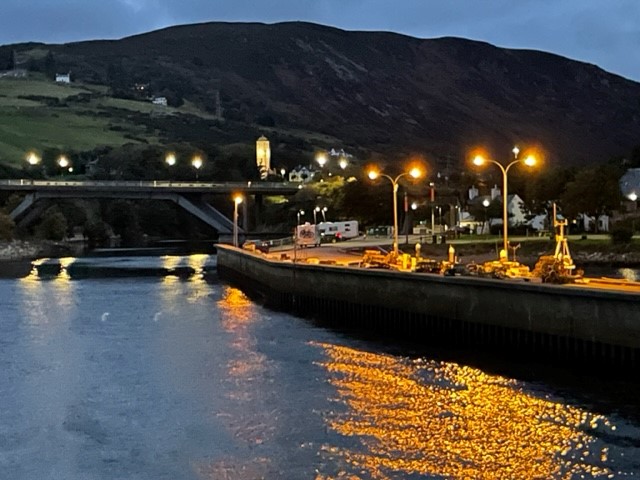
If you have chosen to continue up the A9 and stay at Helmsdale, you will pass through Golspie, I can highly recommend “The Trawler” fish and chip shop, the fish and chips were delicious, and you can sit right by the beach to enjoy them. To work up an appetite before dinner on the way - stop at Dunrobin Castle and visit the castle and gardens. This very grand castle resembling a French chateau was the home to the Sutherland family in the 1800’s. The Sutherlands are known in Scottish history for the disaster that was the highland clearances. Families were forced from their homes so the land where they lived could be repurposed for livestock mainly sheep, families were evicted by having their homes and livelihoods burnt to the ground and they were forced to flee to larger cities to find homes and jobs to survive.

Day 3
From Helmsdale travel to Wick, just outside Helmsdale you can visit the ruins of the village of Badea, here you will find a memorial erected in memory to those forced to flee by Sutherland and his highland clearance regime – there is a stark difference between the luxury and grandness of his home to the simple hunter gather way of living the villagers had.
From here carry on up the A9 towards John o Groats, like Loch ness this is usually a bucket list destination for many of our customers. The village of John o Groats is in the most north east corner of Scotland and has some lovely views over to Orkney. Keep your eye peeled as you may be able to spot seals and dolphins out in the water from the harbour wall.
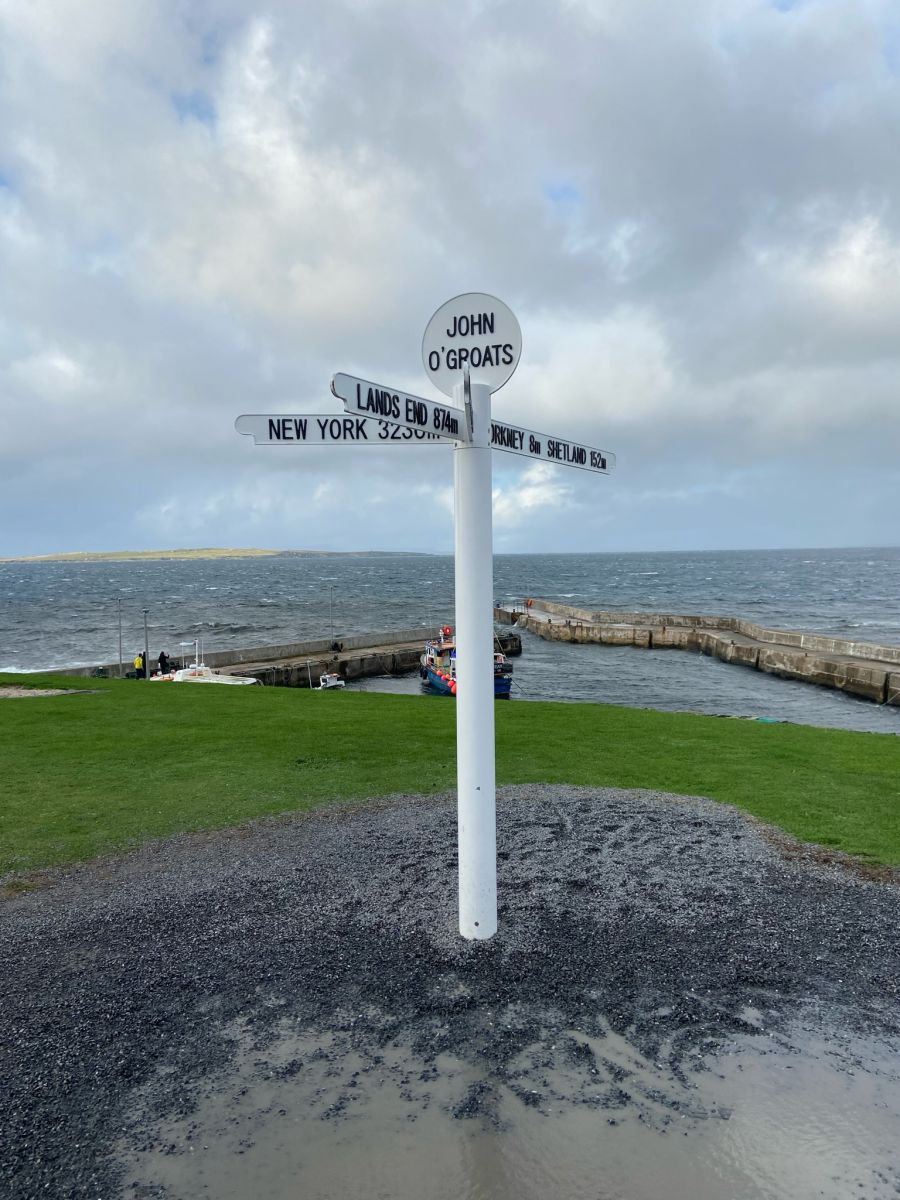
From John o Groats head to Dunnet Head lighthouse this marks the most northerly part of mainland Scotland, the 19th century lighthouse is still active and sits upon 300 foot cliffs, as you stand on the cliff tops you can see across to Orkney, Dunnet head was also a very important site used in ww2 and you can see the abandoned forts that were used by the soldiers to protect the Scapa Flow Naval base in Orkney.
.png)
There is the opportunity to wild camp in the Dunnet Head Car Park for a small overnight fee or there is a great wee campsite called ferryview which is a family run eco site and its only a few miles from Dunnet Head.
Day 4 - Visiting Orkney
For those wanting to visit Orkney you can take the ferry from Scrabster over to Stromness, this short 90-minute ferry crossing sails past the iconic Old Man Of Hoy sea stack. On arrival in Stromness, I would recommend driving a few miles to Houton and taking the ferry from Houton to Lyness on Hoy. When you arrive at Lyness just outside the ferry terminal there is the Scapa Flow Museum which tells the story of the importance of this site in the first and second world war, a truly fascinating experience there is so much to see and read about the life of those who lived in this area during the war, so allow yourself plenty time to experience the museum it has a huge collection of wartime artefacts at the end there is a café so you can refill with a coffee and slice of cake.
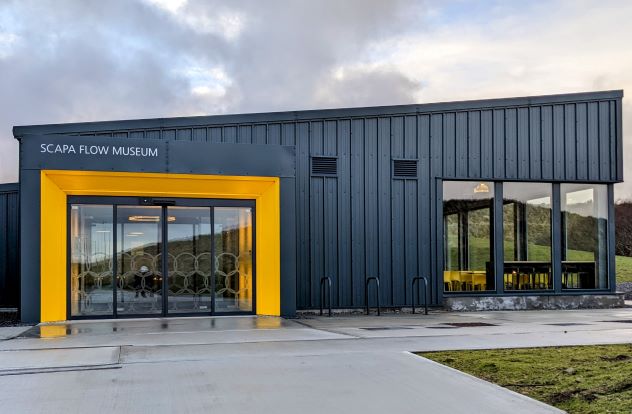
As you drive along towards Old Man of Hoy you will come across signs for Dwarfie Stane, there is a small carpark across the road from the path that leads you to the 5000 year old tomb, a huge block of hollowed out sandstone (hollowed out by hand using stone or antler) its opening is 3ft wide and allows you to crawl inside the narrow passage where on either side of you are the 2 small chambers. You can just make the stone out from the roadside, the car park is only a short walk to visit the Dwarfie Stane.
We chose to do the cliff top walk and walk over to the old Mann of Hoy, the car oark for this is at the Ranwick bay car park, I would recommend taking a sturdy and comfortable pair of walking boots as the path is uneven, its initially quite steep but don’t let this put you off as it levels out and makes for a lovely coastal walk, the walk is probably about 6 miles there and back. We packed our lunch and had a picnic once we arrived at the sea stack, we toured in october but i could imagine this being quite a spectale in the summer months with an array of nesting sea birds.
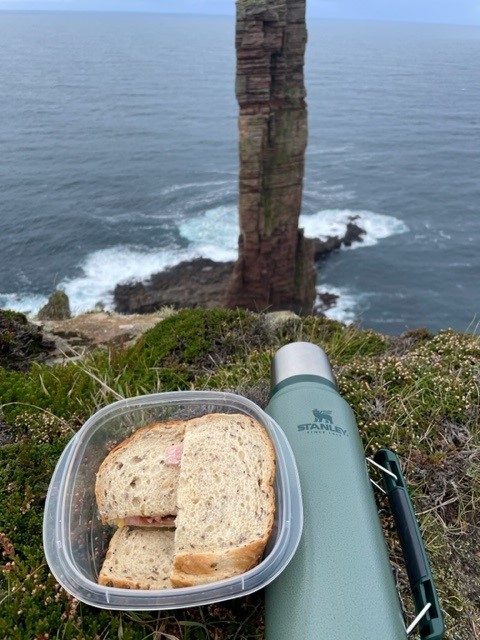
There is no campsites on Hoy that I can find but you will easily find somewhere to wildcamp overnight just remember to ensure you have plenty provisions on board before visiting Hoy and remember to leave only footprints and take only memoires with you.
Day 5
From Hoy take the ferry back to Houton, from here drive towards Stenness where you will pass the standing stones of Stenness, there would have originally be 11 stones set in a circle within the centre of the circle there would have been a stone hearth, the stones date back over 5000 years and would have been used as a ceremonial site, only 4 of the stones are left standing. In 1984 a village was discovered close by the stones and the proximity of the stones to the village means it may have been part of daily life here.
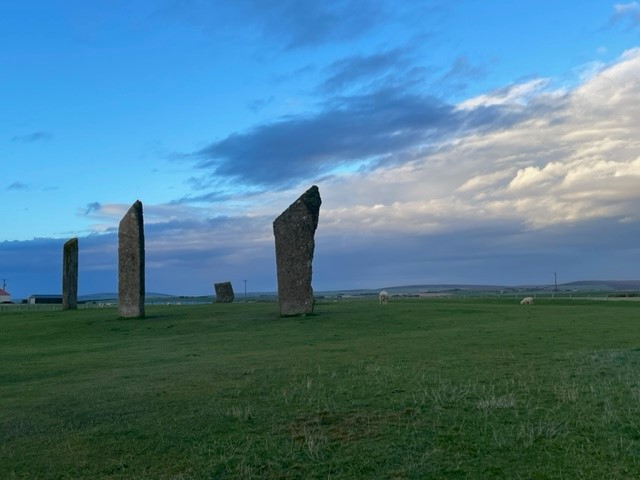
Slightly further along the road you can visit the Ring of Brodgar. The ring of Brodgar dates to 2000 -2500 BC, the exact use of this site is unknow but there are a few theories that it was used for astronomical observations, religious ceremonies, or rituals. Just 27 of the original 60 stones are left standing today, there is an outer ditch surrounding the stones that measures 340 feet across this is the 3rd largest site of its kind in the UK.

Continue along the B9055 towards Skail Bay, the location of the prehistoric village of Skara Brae, dating back over 5ooo years its older than the great pyramids of Giza and Stonehenge. The village of Skara Brae was inhabited for over 600 years, this is one of the best-preserved examples of a neolithic village. It was discovered in the winter 1850 when the storms were so wild, they blew the grass from the sand dunes that we now know today to be Skara Brae.
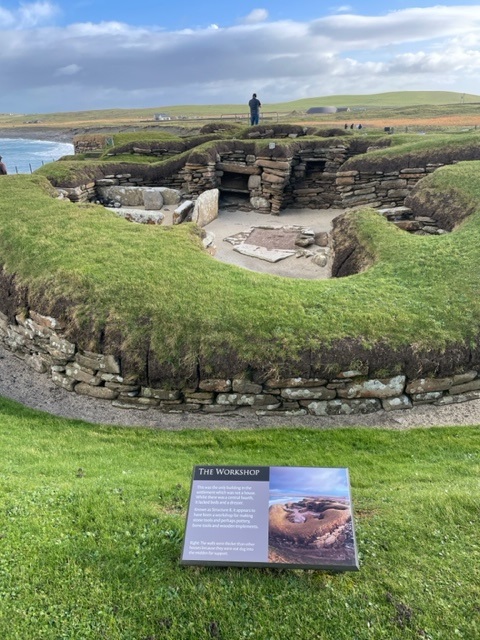
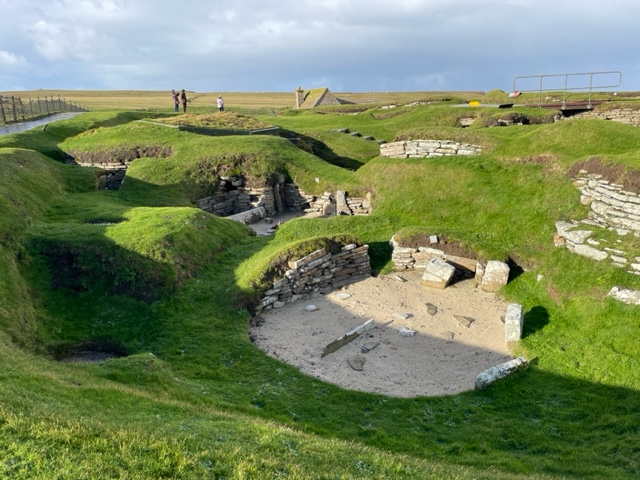
As you can see from the pictures the houses were set into the ground and had passages linking to each other, they consisted of a room, within the room there was a central hearth used for light, cooking and warmth round the hearth was the slab box beds and a central dresser where they would display the prized possessions such as jewellery or pots, small tanks were set into the floor possibly used for storing fish.
The village of Skara Brae was fascinating again there is a café you can visit for a coffee or spot of lunch once you have finished the tour, as part of your ticket you can visit Skail House, it was the occupier at the time Graham Watt who discovered the site after the storms and he was instrumental in preserving what is one of the most important archaeological discoveries.
If you are looking for a campsite you can travel to Kirkwall and stay at the Orkney Caravan Park otherwise you will be able to find a wild camping spot.
Day 6
From Kirkwall travel to Lambholm following the A961, you will turn right over the 1st of 4 Churchill barriers which will lead you to the Italian beach and Italian chapel.
Work on the Churchill Barriers began in 1940 after the HMS Royal Oak was fired at by torpedoes from a German u boat that had managed to access Scapa Flow undetected, 834 men lost their lives in the 1939 disaster.

The work to create these huge concrete barriers across the water took 4 years to complete, the Labour was predominately carried out by Italian prisoners of war that were being held in a camp of the island of Lamb Holm, the barriers originally built to stop ships travelling through to Scapa Flow but now they provide an essential causeway linking the smaller islands back to Orkney, it also provides visitors with a fascinating road trip and after visiting Scapa flow museum on Hoy you can really begin to understand the need for the Churchill barriers.
The Italian Chapel built on Lamb Holm was built by the Italian prisoners of war, in 1943 when Italy captured the allies there was a call from the prisoners to be given more freedoms one of which was a place of worship, and they were reluctantly given permission to build the chapel. The were given 2 Nissan huts that were joined end to end which they went on to covert into the chapel all of which was done in their spare time and created from scrap materials which they used to their own advantage. The story and history of the Italian chapel is fascinating and definitely worth stopping in to visit and see for yourself.
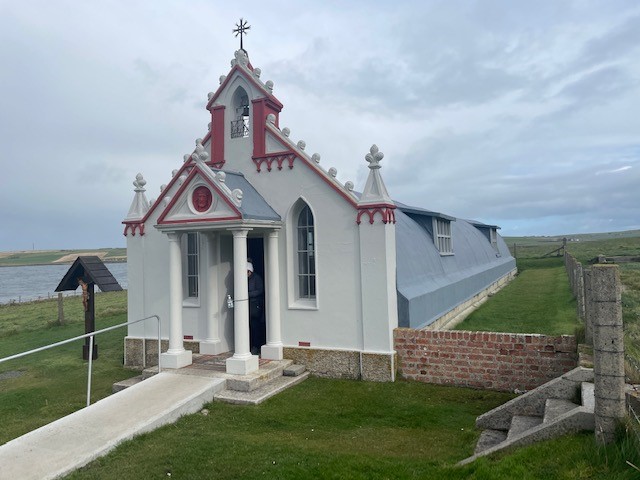
.jpg)
Haven driven over all 4 Churchill Barriers to Burray and South Ronaldsay we then drove back to Kirkwall where we visited the Highland Park Distillery, you need to book the distillery tour in advance to avoid disappointment, if you have an interest in architecture then St Magnus Cathedral in Kirkwall would also be worth stopping in to visit – the Romanesque cathedral took over 300 years to complete.
We choose to stay overnight in Kirkwall and were able to take advantage of a convenient car park we could stay in overnight so we could go out for dinner in Kirkwall before driving back to Stromness to catch the ferry the next morning, there is a campsite on the outskirts of Stromness (Point of Ness Caravan and Camping site) if you prefer to stay on a site in preparation for the ferry back to the mainland in the morning.
Day 7
On return to the mainland make your way to Durness, we stopped at Sandyside Harbour for a spot of lunch and had a walk along the coastal path watching the waves crashing on to the rocks and beach – this is a popular spot for surfers.
.png)
Continue on the A836 towards tongue we stopped to have a walk to the ruins of castle Varrich it’s a lovely wee walk up the hill with some fabulous views. The stretch of road from Tongue to Durness is single track and can be slow in the height of summer when its busy you will very much be starting and stopping along the route.
We stayed at Sango Sands Campsite near Durness and took note of tomorrow mornings activities as we drove past Smoo caves and the Golden Eagle Zip Wire.
.png)
Day 8
From the campsite you will need to go back along the A838 a few miles to be able to visit Smoo Caves, there is limited parking available here so I could imagine in the summer months it being quite difficult to get parked, so I’d probably advise arriving early. The circular path takes you down a steep path where you can enter the sea cave, the entrance stands at an impressive 15 meters high and 40 meters wide – once inside the cave follow the wooden bridge along to the 25 meter waterfall which is quite spectacular, you can take a cave tours to explore the cave a bit further but probably be best to phone in advance to check they are running.
.png)
.png)
Not to far from Smoo Caves you will pass the Golden Eagle Zip Line, if you are an adrenaline junkie then this is for you, the zip line operation is weather dependent, but the line zips you at speeds of up to 45 mph over the beach and boast a stunning ocean view.
.png)
From Durness you will travel down the west coast heading to tonight’s destination at Clachtoll. To reach Clachtoll do NOT take the Drumbeg road this is a challenging drive in the larger campervans we have on our fleet, there is a much safer and more enjoyable alternative by going round by loch Inver its also the quickest route in. A mile past the Drumbeg turn off you will see a small car park area – this is the parking for The Wailing Widow Waterfall, I doubt very much there will be space to park here, but further round the road there is a larger parking area only a short walk back to the smaller car park to find the path for the waterfall.
.png)
The path takes you along the side of the burn just follow this for 15 minutes or so, its not the easiest of paths to walk along so ensure you have good supportive shoes on but once you reach the waterfall you will see its worth the journey. The remarkable waterfall is 30 meters high and know is known as the "wailing widow waterfall", after a folk story that tells of a mother who threw herself from the top after being so distraught after losing her son who accidentally fell from the top in bad weather when out shooting deer.
From the car park here travel a few miles further south then turn right on to the A837 where you will travel up the side of Loch Assynt to Clachtoll if you have time you can stop at Achmelvich beach otherwise you can visit tomorrow on your way to Ullapool. We stayed at Clachtoll Beach Campsite, which was amazing to be honest we were greeted with a friendly and warm welcome and they catered for all your needs, despite being October it was a mild night so we lit the BBQ and enjoyed sitting outside while we could.

Day 9
Just a short drive from the campsite drive towards Stoer lighthouse, the lighthouse is one of the famous Stevenson’s lighthouses, there is a circular walk that takes you to a trig point before sweeping back round to the cliff edges where you can walk back along the cliffs towards the motorhome – as you approach the cliff edge you should be able to see the sea stack known as the Old man of Stoer.
.png)
From Stoer you’re going to head back along the B869 towards Ullapool if you didn’t stop at Achmelvich beach yesterday then it’s worth stopping to take a picture.
.png)
Once you join the A837 driving along the side of Loch Assynt you will come across the ruins of the 16th century Ardvreck Castle there is good parking if you decide to take the short walk to visit the ruins. There is not a lot of Wild camping in the Ullapool area, we choose to book into the Broomfeild campsite overlooking the seas you can watch the ferries cross back and forth to the Outer Hebrides, the highlight of a trip to Ullapool for me is a visit to the Seafood Shack and its just a short walk from the campsite – this burger style van produces some of the finest seafood, its caught by local fisherman then prepared and served fresh to order – just delicious.
Day 10
Today we will be heading back towards Blair Atholl in preparation for returning the motorhome tomorrow morning, we stopped at the LPG station outside Inverness to save us getting LPG in Perth, and choose to stay at the Blair Atholl Campsite so we could ensure the motorhome was cleaned and emptied for returning in the morning.
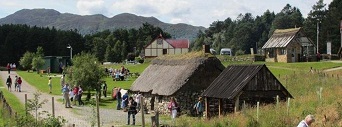
Before we worried about chores we still had the day to enjoy, If you were not able to visit Inverness or Aviemore and still have activities you wish to do then you could stop enroute to Blair Atholl. We stopped at Newtonmore and visited the Highland Folk Museum, the earliest house here date back to the 1700's - the museum takes you on a journey all the way to present day it gives a greater understanding of how the highland folk lived and worked.
We then stopped at the House of Bruar which is quite often described as Harrods of Scotland, it sells a wide range of homeware, sporting equipment, clothing country wear, but I have to be honest we stopped for gifts from their food hall to take home and for a coffee and scone at the coffe shop. If you have taken the time to stop at the House of Bruar then its worth having a walk around the back of the building,and following the signs for the Bruar Falls walk, its not a long walk but takes you through the forest following the river to a bridge where you can view the water fall.
Day 11
Unfortunately, today it’s time to return the motorhome, it takes approximately 45 minutes to travel form Blair Atholl back to Perth, please allow time to stop in Perth and top up the diesel before returning back to the depot.
This is a suggested campervan route based on our own personal campervan adventures, you can adapt this to suit your own interests, one of the biggest benefits the campervan offers is the freedom to explore at your own pace and creating your own memories.
Hire a Campervan From Scottish Tourer
If you're looking to explore Scotland in a unique way, consider hiring a campervan from Scottish Tourer. With a range of vehicles to choose from, you can enjoy the freedom of the open road and the flexibility to travel at your own pace. Whether you want to explore the stunning Scottish countryside, visit historic castles, or sample the local whisky, a campervan from Scottish Tourer is the perfect way to do it. With comfortable sleeping quarters, cooking facilities, and all the necessary amenities, you can enjoy the ultimate Scottish adventure. Contact Scottish Tourer today to learn more about their campervan hire options and start planning your Scottish road trip.
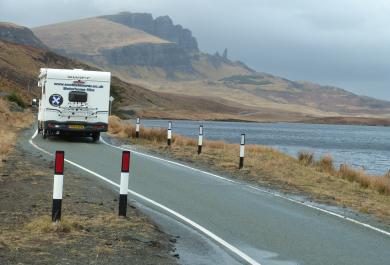
Driving Routes
Motorhome Hire Scotland - Itinerary Guide
Scotland is a very beautiful country, rich in culture and history...
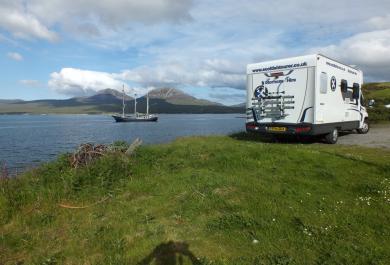
West Coast route
We are the only company who have all brand new very high specification motorhomes, however and more important than that is the service and advice of where to go and also where not to go from experienced expert local motor homers.

 Call Us
Call Us Email Us
Email Us Add to Contacts
Add to Contacts Latest Review
Latest Review Book Now
Book Now